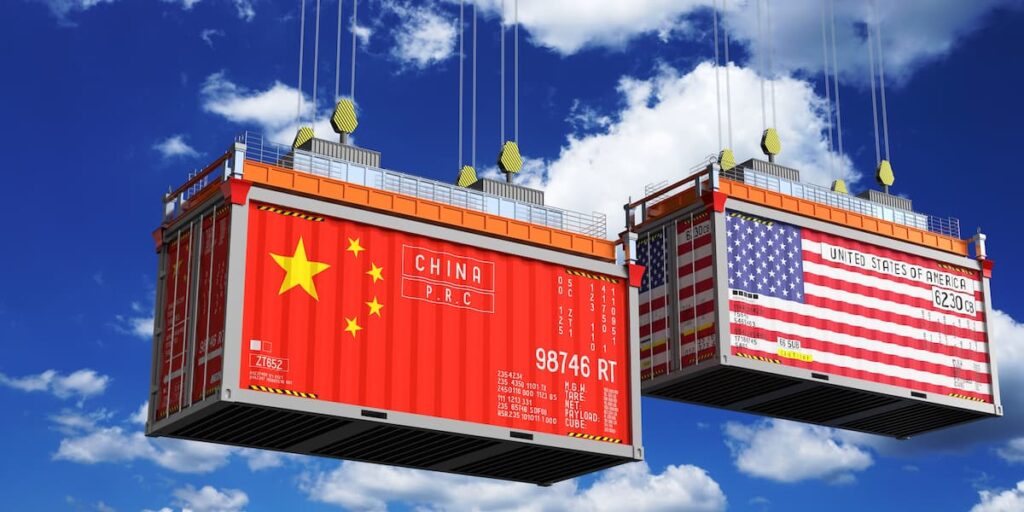China said Friday it is “currently assessing” proposals from the United States to initiate trade talks, signaling a subtle but important shift that could lead to negotiations between the two global economic powers.
A spokesperson for China’s Commerce Ministry announced that “the US has recently sent multiple messages to China through relevant parties, hoping to start talks with China. China is currently evaluating this.” The statement indicates a softening in Beijing’s public stance, which has remained firmly defiant during the recent escalation of tensions driven by President Donald Trump’s aggressive tariff policies.
Trump has repeatedly claimed that talks with Chinese officials were underway, but until now, Beijing had denied those assertions. Even as it acknowledged the US overtures, China made clear that any negotiations would require specific conditions. “The tariff and trade war was unilaterally initiated by the US, and if it wants to negotiate, it must demonstrate genuine sincerity — that includes being prepared to correct its wrongdoings and cancel its unilateral tariff hikes,” the spokesperson said. “China’s position remains consistent: If it’s a fight, we will see it through to the end. If it’s talk, the door is open.”
This cautious approach reflects Beijing’s desire to appear open to dialogue while maintaining a strong bargaining position.
Mounting Economic Pressure
The potential for talks comes as economic pressures intensify on both sides. Earlier this month, Trump raised tariffs on Chinese goods to 145%, dramatically impacting China’s ability to trade with the United States. In retaliation, Beijing raised tariffs on American imports to 125%.
The economic toll on China is already evident. Factory activity contracted in April at the fastest pace in 16 months, according to official data, highlighting the strain on the country’s manufacturing sector. Many factories have been forced to halt production, while others are shifting focus toward alternative markets in Europe and elsewhere.
In the US, major retailers such as Walmart and Target have resumed limited business with Chinese suppliers, but supply chain disruptions persist. The National Retail Federation expects US imports in the second half of 2025 to fall by at least 20% year-over-year, while JP Morgan forecasts a steep 75% to 80% decline in imports specifically from China.
On Thursday, US Secretary of State Marco Rubio stated that China’s economic struggles are pushing Beijing toward negotiations. “The Chinese are reaching out, they want to meet, they want to talk,” Rubio told Fox News, adding that trade discussions “will come up soon.
Diplomatic Posturing Continues
Despite early signals of possible movement, both sides continue to posture publicly. Trump recently suggested that US tariffs on Chinese goods could “come down substantially,” promising a more conciliatory approach at the negotiating table. However, Beijing responded with skepticism, reiterating that the removal of all tariffs must be a precondition for meaningful talks.
Earlier this week, China’s foreign ministry released a pointed social media video vowing that the country would not “kneel down” to American pressure, emphasizing a message of resilience to its domestic audience.
Throughout the week, US and Chinese officials have engaged in a careful diplomatic dance, each side reluctant to be seen as the first to concede. Trump’s team emphasizes that any softening of tariffs would be conditional, intended only to facilitate a better deal.
At stake is a vast flow of goods and a global economy that relies heavily on stable US-China trade relations. Business leaders, already grappling with uncertainty, are watching developments closely, hoping for clarity that could stabilize supply chains and investment plans.
High Stakes Ahead
The stakes for both countries — and for the global economy — are considerable. Prolonged trade tensions risk further slowing global growth and could force companies to permanently realign their supply chains away from China.
Imports to the United States are already under pressure, and Chinese exporters are struggling to find new buyers. Meanwhile, political pressures in both Washington and Beijing are constraining leaders’ flexibility to compromise without appearing weak.
Whether these early signals translate into formal negotiations remains unclear. But China’s acknowledgment that “the door is open” marks the first public sign in months that dialogue might be possible — provided both sides can navigate the considerable political hurdles ahead.



